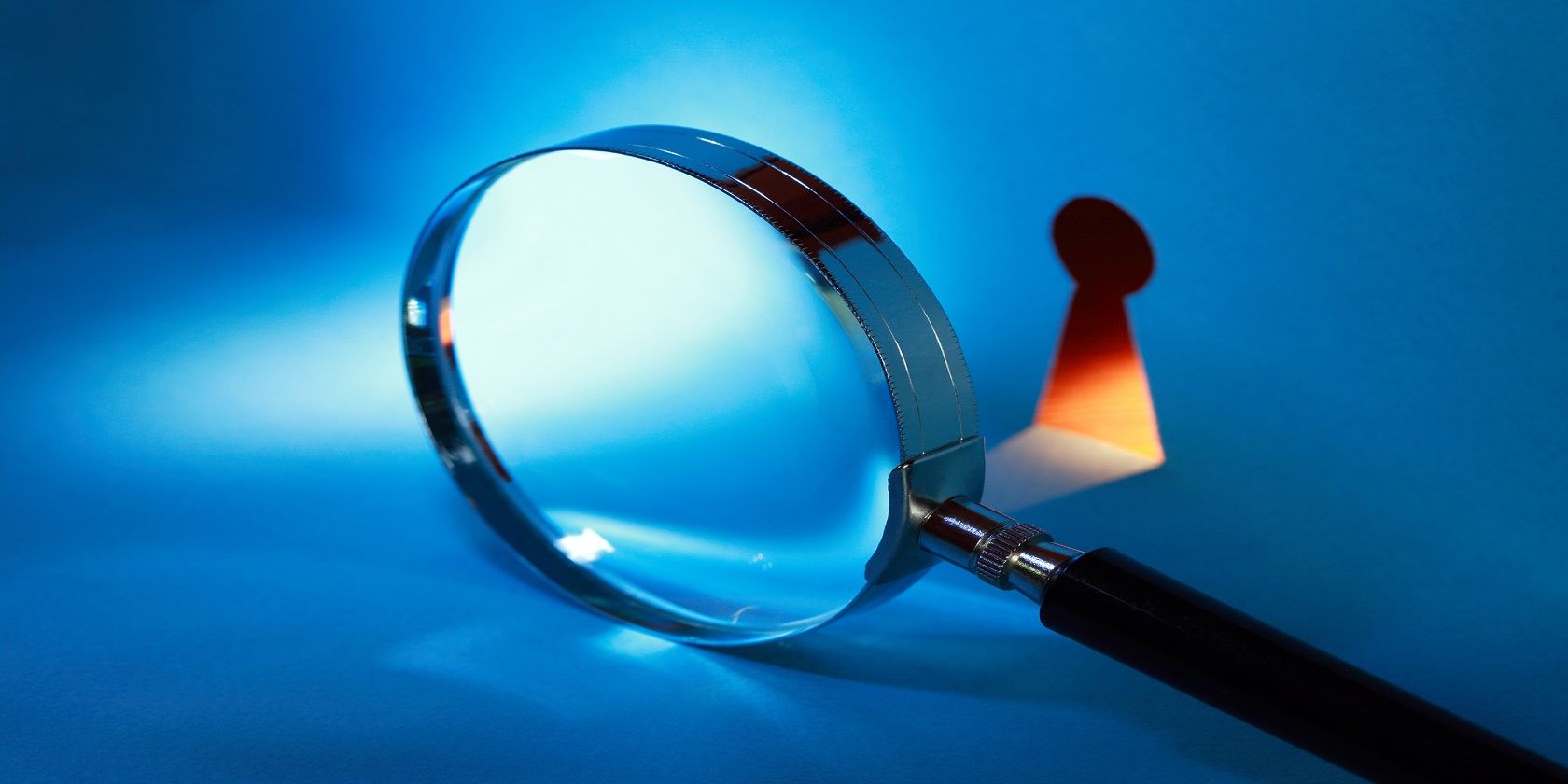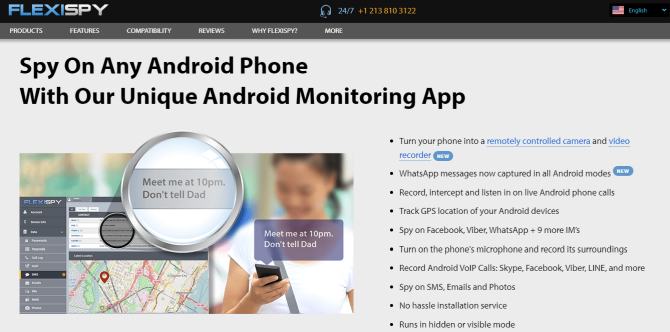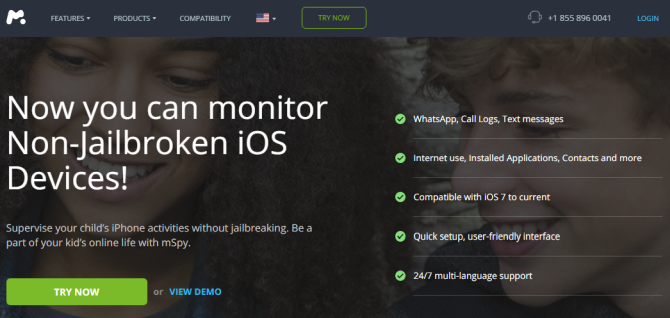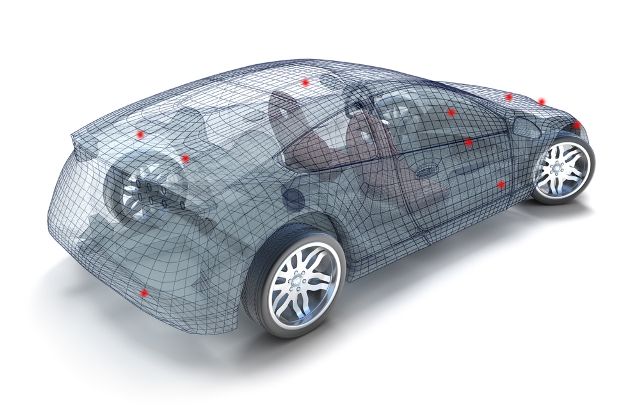A quick Google search for "spy software" yields over 150 million results. There is a massive interest in spying software and gadgets. Irrespective of the motivation or justification, spying is illegal. It is a gross invasion of privacy in most countries around the world.
You don't have to suffer if someone is spying on you. There are several tools that will help you find hidden spy apps and programs on your computer, smartphone, or otherwise. Here's how to protect yourself from being spied on.
1. Smartphone Spying Applications
Smartphones are one of the biggest personal conveniences of the digital age. For many, the smartphone is the single biggest store of personal information. You access your emails and text messages, take photos, store banking information, and much more on your smartphone. As such, smartphones are a prime target for spying apps and data theft.
Once installed on your smartphone, a mobile spying app uses your data connection to send remote logs to the person spying on you secretly. These logs can include:
- Calls.
- Text messages and emails.
- Photos and videos.
- Data from Facebook, Twitter, and other social media apps.
- Location tracking data.
Spy applications can invade all areas of a smartphone. The amount of available data depends on the spy app. For instance, some smartphone spy apps might send data back to a remote server for analysis, while others may include activation of the smartphone microphone to listen to phone calls directly, or real-time location tracking over GPS.
A smartphone spying app will not have an obvious user interface. In most cases, the spyware app can hide its app icon, whether on iOS or Android. Furthermore, key to their success, the spy can access the logs and app remotely, without ever having to engage with the smartphone again.
How to Avoid Android and iOS Spyware Apps
Take the following measures to avoid Android and iOS spyware apps:
- Always keep your phone with you, in your possession.
- Use a strong password to lock your device. Do not use easier lock options such as a basic PIN or a pattern combination. Add a biometric lock where possible.
- Consider your surroundings while unlocking and using your device.
- Monitor your device for strange behavior. Strange behavior includes randomly waking, unexpected activity, increased network usage, unexpected network connections, and so on.
- Monitor your bandwidth using a data monitoring app. Check the app for strange apps using data. It could be a spyware app sending data.
How to Find Hidden Spy Apps on Android
Android devices are particularly vulnerable to spyware, for a few reasons.
First, the wide range of devices that Android runs on means vulnerabilities are easy to find. Android also runs on older hardware, which is prone to vulnerabilities. The range and age of hardware make Android a prime spyware target.
Second, it is easier to root an Android device than to jailbreak an iOS device (read more about jailbreaking below). Rooting an Android device gives access to the entire device. A spy can root an Android device, then hide the spyware effectively.
Android users have two options for spyware tracking and removal.
First, scan the device using Malwarebytes Security. Malwarebytes is an extremely well-respected antivirus and antimalware tool. Download and scan your Android device with it, removing any malicious applications it finds.
Download: Malwarebytes Security for Android (Free)
If the spyware issue persists, the only option is to perform a full factory reset. The full factory reset will remove all apps on the device.
How to Find Hidden Spy Apps on iOS
iOS spyware is a different beast to Android. The iOS operating system is more secure, offering better-integrated privacy features. Central to that security is the App Store. If an app isn't on the app store, you must jailbreak the iPhone or iPad to install it on the device.
The easiest way to check for a jailbroken iOS device is to search for the Cydia app. The Cydia app installs and allows extensive customization and non-native iOS options. If you find the Cydia app, you can factory reset your phone to remove the jailbreak and any spyware installed using the vulnerability.
More recently, a new generation of iOS spyware apps no longer require jailbreaking. These apps require physical access to the phone to set up but can track and monitor in real-time. A spy can extend the functionality of these non-jailbreak spy apps with access to the iCloud login credentials of the victim (as you might expect).
Unfortunately, finding one of the latest iOS spyware apps is incredibly difficult. Users should monitor their data use, messaging, incoming and outgoing calls, and battery statistics. A spyware app will negatively impact the battery as it constantly logs data. It will also impact the device's data use as it sends and receives information.
As with the Cydia app, the easiest way to clean spyware from an iOS device is a factory reset.
2. Desktop Spying Applications
Remote access applications, keyloggers, and malware are the weapons of choice for desktop spying. A VNC app allows anyone to view all activity on your computer as it takes place. Similarly, a remote access Trojan (RAT) is a far more dangerous type of malware that can give access to your system to a hacker.
Finally, a keylogger records every keystroke you make on your system and can give away your banking and social media passwords and much more without ever alerting you.
A spy can install a spying app remotely, and with greater ease than a smartphone. Certain operating systems are easier to work with. Like Android on smartphones, it is easier to install spyware on a Windows machine due to known vulnerabilities and the ubiquitous nature of the operating system. However, macOS and Linux users aren't in the clear.
How to Avoid Spy Apps on Your Desktop
The variety of spy apps for desktop and laptop computers means there are a few strategies to consider. Consider the following measures to avoid your computing being spied upon:
- A strong unique password for every account, including your desktop login.
- Set your lock screen to activate on a very short timer. Always lock your desktop when you leave the room.
- Administrator. Never allow anyone to use your desktop as an administrator. With admin privileges, a spy can install whatever privacy-invading apps they want. Only the administrator should install apps.
- Antivirus and Antimalware. Install a strong antivirus and antimalware suite. The combination will stop remote access to your computer and stop malicious software installing.
- Check. Your programs list regularly for unexpected changes. Most spyware, malware, or keyloggers won't appear in your programs list, but it is worth keeping an eye on.
This isn't an exhaustive list. If someone really wants to spy on your desktop, they will find a way to install it without your knowledge. In most cases, the spyware comes from someone with direct access to the desktop, installed manually.
How to Find and Remove Spy Apps on Your Desktop
If your desktop has spyware installed, you might note a few changes. The issues are all analogous with malware because, in reality, spyware is the same. Is your computer:
- Slow or sluggish?
- Starting to crash randomly (when before it was fine)?
- Showing multiple pop-ups or other adware?
- Forcing you to redirect to random websites?
- Experiencing unexpected browser settings?
- Showing random error messages?
You could have a spyware issue. Catching spies on your computer is not easy, but you can do it.
Windows and macOS users should download and install Malwarebytes Premium, then scan their system. Boot your system into Safe Mode, then run the scan. Spyware and malware can hide during a regular boot. Whereas, Safe Mode is a reduced boot process, with fewer processes and services for spyware to hide behind.
The process of entering Safe Mode is different for Windows and macOS. Windows users can find out How to Boot in Safe Mode on Windows 10, while macOS users should check out A Quick Guide to macOS Boot Modes and Startup Key Combinations.
3. GPS Tracking Devices
If the person spying on you cannot access your smartphone or desktop, they might attempt to track your movement, instead. GPS tracking devices are relatively cheap. They're also easy to hide on a large object, like a car.
There are several tell-tale signs that someone is tracking your car. If you suspect someone is keeping tabs on your location using a GPS tracker, here are some of the prime spots to check:
- Inside the bumper.
- Under the bug shield.
- Under the grill.
- The gap between hood and window.
- Under the front dashboard.
- Inside the door speakers.
- Top of the roof.
- Inside the rear speakers.
- Under the rear dashboard fabric.
- Inside the rear third brake light.
- Inside the rear plastic bumper.
- In the glove compartment.
A GPS tracker can be tiny. If you want to find one in your vehicle, you must complete a thorough search.
You can also check your vehicle's On-Board Diagnostics (OBD) port for any suspect hardware. If you unsure about On-Board Diagnostics, here's a short guide to the OBD port. Unlike a standalone GPS tracker, an OBD port tracker will not run out of battery.
You can also jam a GPS signal with a GPS jamming gadget. However, signal jammers are highly illegal for a variety of reasons.
If you cannot see anything, try using a radio frequency detector to isolate any suspect transmissions.
4. Cameras and Microphone Spying
Like GPS tracking devices, spy cameras and microphones continually scale down. A high-spec spy camera and microphone combination could fit into or behind most household objects. The camera might have additional functionality, too, such as night vision, motion tracking, face detection, live streaming, and more.
A spy can conceal a hidden camera and microphone in many places because of its size. If you suspect there is a camera and a microphone in your office, home, or otherwise, check the following places:
- Light fixtures.
- Smoke detectors.
- Shelves.
- Speakers.
- Underneath tabletops.
- Shelves.
- Flowerpots.
- Lampshades.
- Clocks.
- Wall pictures.
- Any other place that could conceivably conceal a miniature camera.
You can also look for small holes in your walls that might indicate the use of a pinhole camera. Another option is to turn all of the lights off at night and scan your surroundings for a tell-tale LED light.
If you cannot find a camera or microphone but suspect someone is spying on you, try and locate the camera using your smartphone. There is a range of smartphone apps that scan your local area for radio frequency transmissions or electromagnetic fields. Apps are available for iOS and Android devices. Wireless cameras transmit at frequencies ranging from 900MHz to 5.8GHz.
You can also check the Wi-Fi network in your home. You might find the suspect spy camera using your internet to broadcast images and audio back to the spy. If you are unsure of what to do, here's how you check your Wi-Fi network for suspicious devices.
What to Do If Someone Is Spying on You?
Finding out someone is illegally spying on you is a horrible feeling. But you need to consider what to do next. In most cases, calling the police is the best option once you have evidence. Without evidence, it is difficult for the police to follow up any claims.
Spyware isn't the only issue facing smartphone users. Android users should protect their devices from stalkerware, an equally insidious privacy-invading type of app. Keep in mind that no matter what you do, you're always leaving a trace that hackers could use for a hands-off a side-channel attack.




